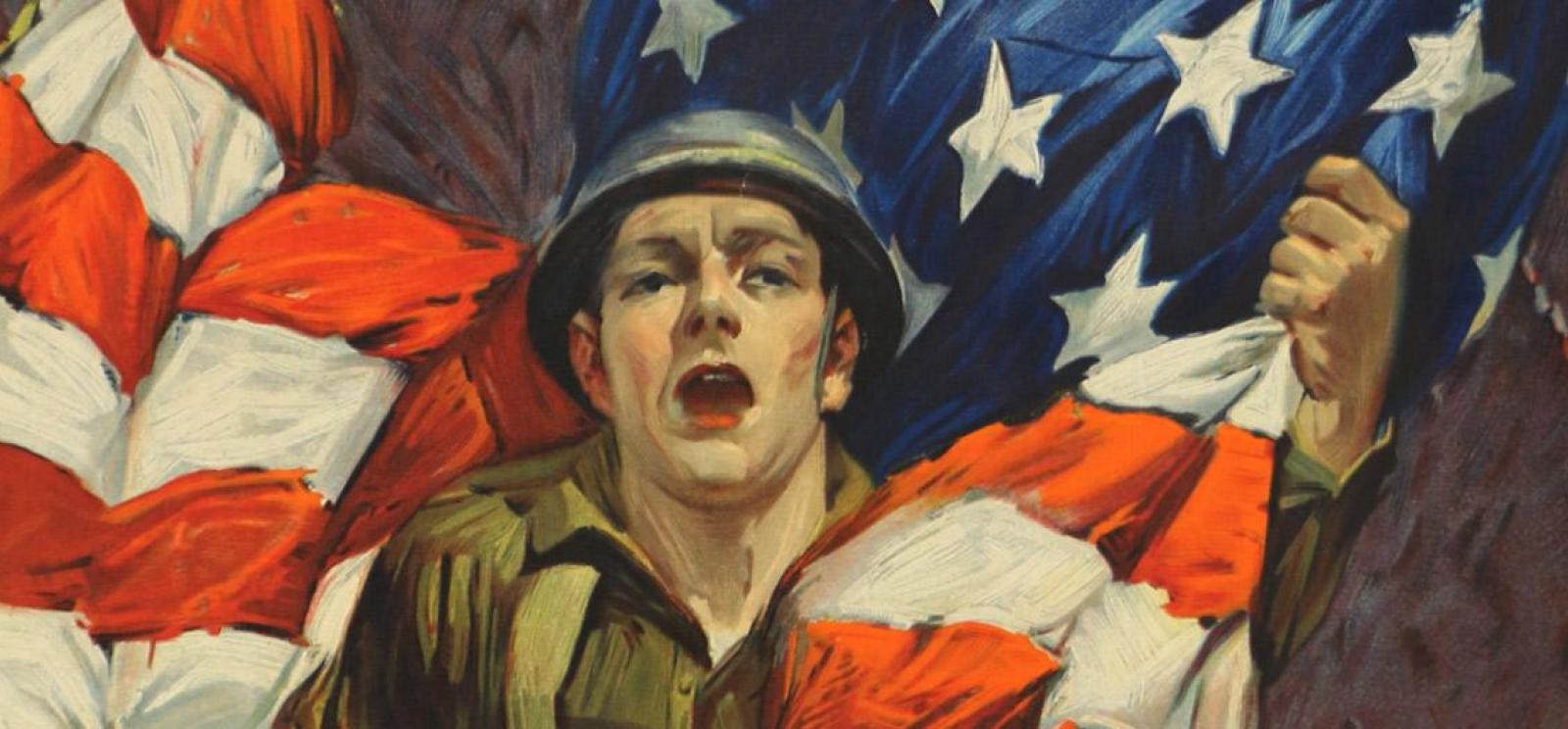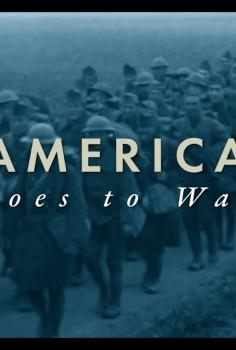Why did the U.S. Fight in WWI?
Why did America enter World War I? When WWI began in Europe in 1914, many Americans wanted the United States to stay out of the conflict, supporting President Woodrow Wilson’s policy of strict and impartial neutrality. “The United States must be neutral in fact as well as in name during these days that are to try men’s souls. We must be impartial in thought as well as in action, must put a curb upon our sentiments as well as upon every transaction that might be construed as a preference of one party to the struggle before another.”
Although a vocal segment of the population favored “preparedness” for war (especially strengthening the U.S. military) and over a hundred thousand Americans volunteered for the international war effort, support for neutrality and isolationism was strong.
Despite the U.S. position, many Americans personally sympathized with Britain, France and their allies. American institutions lent large sums to the Allied governments, giving the U.S. a financial stake in the outcome of the war. Nearly 10% of Americans identified as ethnic Germans, most of whom hoped the United States would remain neutral in the war.
Public opinion began to shift away from neutrality following Germany’s sinking of the Lusitania in May 1915, which resulted in the deaths of nearly 1,200 passengers, including 128 Americans. In the face of strong U.S. reactions, Germany temporarily backed off its submarine attacks on passenger and merchant marine ships in the Atlantic.
"Let nations arbitrate their future troubles, It’s time to lay the sword and gun away, There’d be no war today, If mothers all would say, I didn’t raise my boy to be a soldier."
By 1915, especially in Eastern cities, a new Preparedness Movement proclaiming that the U.S. needed to immediately build up strong naval and land forces for defensive purposes. Interventionists, like former president Theodore Roosevelt, rallied to shape public opinion. “Preparedness against war does not invariably avert war, any more than a fire department in a city will invariably prevent a fire, and there are well-meaning, foolish people who point out this fact as offering an excuse for unpreparedness.”
Equally strong in 1916, was the support for a continued policy of strict neutrality in the World War. In June of that year, New York Governor Martin Glynn stated at the Democratic National Convention in St. Louis, “The doctrine of neutrality is so closely woven into the warp and woof of our national life that to tear it out now would unravel the very threads of our existence. Is there any American so blind to our past, so hostile to our future that, departing from our policy of neutrality, he would hurl us headlong into the maelstrom of the war across the sea?”
What Changed?
In November of 1916, President Woodrow Wilson won a close re-election under the slogan “He Kept Us Out of War.” Yet in early 1917 when Russia’s internal political revolutions effectively took them out of the war against Germany, the prospects for the Allies darkened. Already receiving massive shipments of supplies and a near limitless line of credit from the U.S., the Allies needed reinforcements.
When easing Eastern military pressures made more forces available for their Western Front, Germany sensed the tide was turning. To capitalize on the shift, German leaders agreed in January of 1917 to resume unrestricted submarine warfare to break the devastating army stalemate in Europe and the British navy’s successful blockade of critical German supply ports. This pushed American public opinion toward intervention.
Germany’s unrestricted submarine warfare strategy sent more merchant and passenger ships to the ocean’s floor and the loss of American lives mounted. The U.S. protested and in February severed diplomatic relations with Germany, while Congress appropriated funds for increased military affairs.
About the same time, British cryptographers intercepted and began deciphering Germany’s “Zimmermann Telegram” offering U.S. territory to Mexico in return for joining the German cause. Though Mexico declaring war was not perceived as an imminent threat by the American public, sensational headlines trumpeted each new development as one of history’s most influential acts of codebreaking played out. Across the nation, support grew for intervention.
On March 20, almost a month after the Zimmerman Telegram hit the American press, President Wilson convened the Cabinet to discuss moving from a policy of armed neutrality to war. It was unanimous: all members advised war. With a proclamation already being drafted by President Wilson, the American steamship Aztec was torpedoed and sunk by Germany on April 1.
The Zimmermann Telegram
Investigate the German offer to Mexico that inflamed international tensions.
On April 2, President Wilson asked Congress to declare war against Germany specifically citing Germany’s renewed submarine policy as “a war against mankind. It is a war against all nations.” He also spoke about German spying inside the U.S. and the treachery of the Zimmermann Telegram. Wilson urged that “the world must be made safe for democracy.” For four days, Americans debated the momentous decision and most major newspapers published a sensationalized mix of war news and rumors that cast Germany as a ruthless enemy.
On April 4, the Senate voted to declare war against Germany by a vote of 82-6. At 3:12 a.m. on April 6, the House of Representatives passed the resolution in a vote of 373 to 50.
The United States went to war.
Filling the Ranks
Learn how the U.S. built a military machine.








